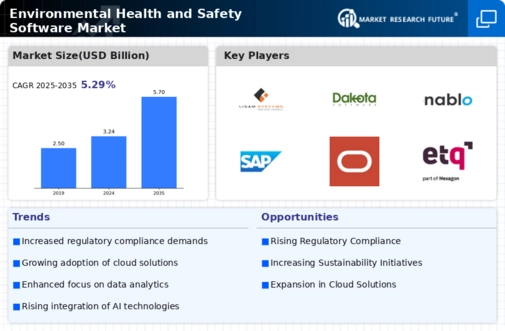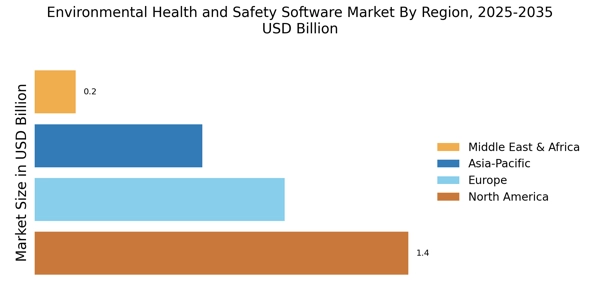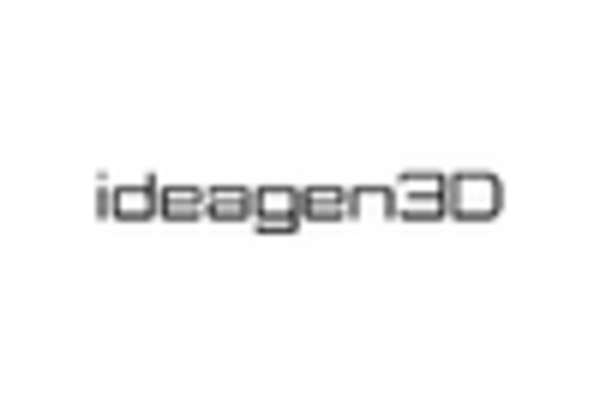Rising Regulatory Requirements
The increasing complexity of regulatory frameworks across various industries appears to drive the demand for Environmental Health and Safety Software Market solutions. Organizations are compelled to comply with stringent regulations, which necessitates the implementation of software that can streamline compliance processes. In recent years, the number of regulations has surged, with many countries adopting more rigorous environmental standards. This trend suggests that companies are likely to invest in software that not only ensures compliance but also mitigates risks associated with non-compliance. The Environmental Health and Safety Software Market is thus positioned to benefit from this growing need for regulatory adherence, as businesses seek to avoid penalties and enhance their operational integrity.
Increased Focus on Sustainability
The growing emphasis on sustainability and corporate social responsibility is influencing the Environmental Health and Safety Software Market. Companies are increasingly recognizing the importance of sustainable practices, not only for regulatory compliance but also for enhancing their brand reputation. This shift towards sustainability is prompting organizations to adopt software solutions that help track environmental performance and manage sustainability initiatives. Recent studies indicate that businesses with robust sustainability programs tend to outperform their peers in terms of profitability and market share. As a result, the demand for EHS software that supports sustainability efforts is likely to rise, positioning the Environmental Health and Safety Software Market for continued expansion.
Emerging Markets and Global Expansion
Emerging markets are presenting new opportunities for the Environmental Health and Safety Software Market, as businesses in these regions increasingly recognize the importance of EHS compliance. As industries expand into new territories, the need for effective environmental and safety management systems becomes paramount. Companies operating in emerging markets are often subject to evolving regulations, which necessitates the adoption of software solutions that can adapt to local compliance requirements. This trend suggests that the Environmental Health and Safety Software Market may experience growth as organizations seek to establish robust EHS frameworks in these regions. The potential for market expansion in developing economies is significant, as businesses prioritize safety and environmental stewardship.
Growing Awareness of Workplace Safety
There is a notable increase in awareness regarding workplace safety, which seems to be a significant driver for the Environmental Health and Safety Software Market. Organizations are recognizing the importance of creating safe work environments to protect employees and reduce liability. This heightened awareness is reflected in the rising investments in safety training and technology. According to recent data, companies that prioritize safety experience lower accident rates and improved employee morale. Consequently, the demand for software solutions that facilitate safety management, incident reporting, and risk assessment is likely to grow. The Environmental Health and Safety Software Market is thus expected to expand as organizations strive to enhance their safety protocols.
Technological Advancements in Software Solutions
Technological advancements are transforming the Environmental Health and Safety Software Market, as innovative solutions emerge to address complex safety and environmental challenges. The integration of advanced technologies such as cloud computing, data analytics, and mobile applications is enhancing the functionality and accessibility of EHS software. These advancements enable organizations to collect and analyze data more effectively, leading to informed decision-making. Furthermore, the market is witnessing a shift towards user-friendly interfaces that facilitate ease of use for employees at all levels. As organizations increasingly adopt these sophisticated tools, the Environmental Health and Safety Software Market is likely to experience substantial growth, driven by the demand for more efficient and effective safety management solutions.


















Leave a Comment